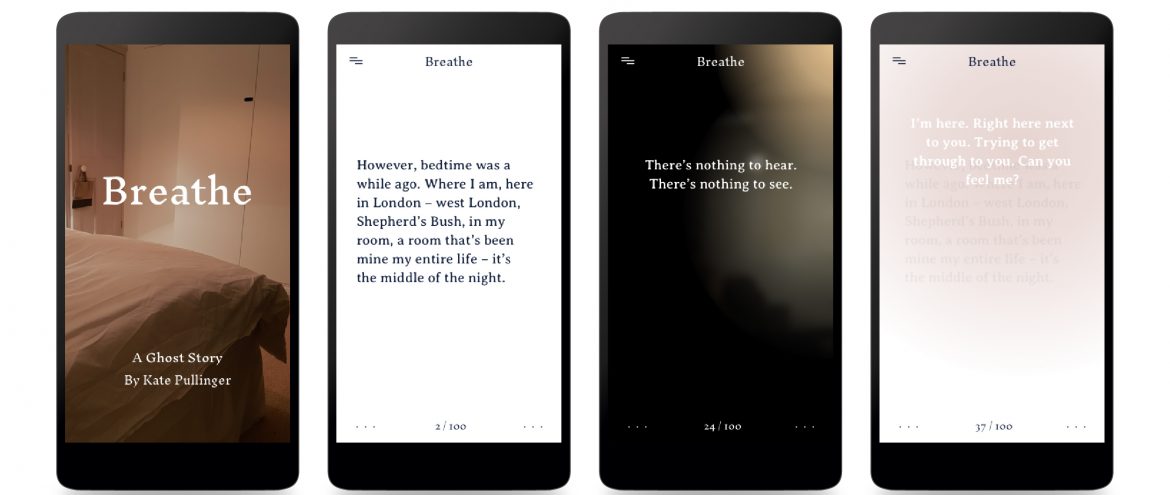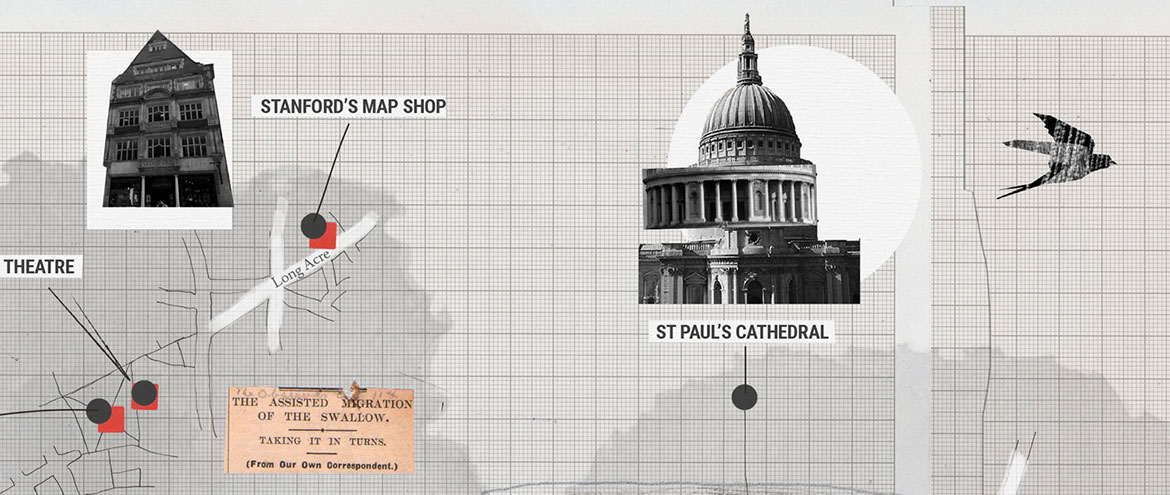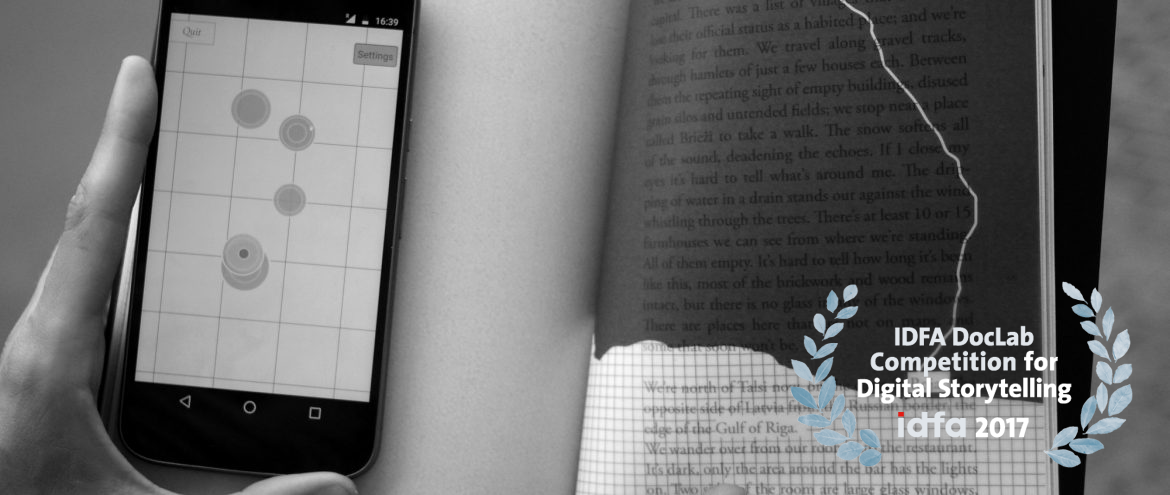Examining ambient literature as an emerging literary form led me to “Screening the Literary: Writing Quality on the Web,” a workshop held at Lancaster University in October. Run by the Authors and the World Research Hub, an AHRC-funded collaboration researching the position of the author as both cultural artefact and producer of literary texts. This one-day workshop brought together researchers working in several fields, from French studies and contemporary arts to computing. There was an emphasis on examining the book as a cultural form and the shifting position of the author in digital spaces. Erika Fülöp, workshop convenor, recognises that although the potential death of the printed book has been debated since the 1990s there are still questions to be asked about applying the term “literary” to digital texts, particularly considering they can take various forms, and include multiple elements, such as audio, images, and video. The workshop asked, “How…
Drawing What’s Not There
One of the methods we use to teach first year students to think about drawing differently (context: I teach drawing and printmaking when I’m not making and researching new forms of literature) is to use negative space in order to draw. To look at what’s not there as much as they do at the object they’re drawing. What this teaches them (hopefully) is that the space around a form is as important as the form itself. The unspace, so to speak, between the architecture of a building and its surroundings illuminates aspects of the relationship between each piece of steel, concrete, and glass and the people moving through that space. That’s been on my mind this week as we prepare the final elements of our second experiment in Ambient Literature. Yesterday you’re still dreaming is a short, focused piece of research-by-practice; an intervention into the overall programme of work in order to…
yesterday you’re still dreaming
As part of the Bristol Festival of Ideas, Circumstance present an experiment in Ambient Literature: “yesterday you’re still dreaming.” Ambient Literature is a narrative form within which the fabric of the city itself becomes part of the fictional space. The story is around you, and the phone in your hand becomes the vehicle for a new kind of story, somewhere between listening and performing. All you need to bring is yourself. “yesterday you’re still dreaming” runs for approximately 15 minutes, and will be available at an undisclosed Harbourside location every 30 minutes between 12:00 and 17:00 on Saturday 12th November. Up to 15 spaces are available in each session. Space is limited, so sign up now: We’ll be sending you more details closer to the day. . . . No phone required. REGISTER HERE
Driving with Barthes
As a child, I read a lot in the back of cars. My parents, then recent immigrants to the UK, drove regularly across Northern Europe for family and work, and, unlike my sister, I was blessed with a constitution that allowed me to read in any sort of moving vehicle without feeling nauseous. Not every readerly child, of course, grows into a readerly academic, but the “use” of reading to while away the hours of a journey, or for that matter to while away the hours before that journey begins at the bus-stop or airport, is socially ubiquitous, even more so now with mobile phones. Reading while travelling, though, is itself relatively new. Despite the handful of readers in the past who startled their contemporaries with their ability (and desire) to read and walk at the same time—plus ça change—reading on the move needed to wait for the technologies of…
Was Tom Raworth’s Ace the start of ambient literature? No, but . . .
This is a picture of my copy of the Edge Books reissue of Tom Raworth’s Ace (2001). Initially printed in 1974 and reissued in 1977 and 2001, it was given to me years ago by poet and editor of Raworth’s selected poems, Miles Champion. It was Miles who first introduced me to Raworth’s work and seemed to have an endless stack of copies of Ace sitting around to put into receptive hands. It can’t really be made out in the photo, but the spine of the book is permanently rolled from the months (or maybe years) that I spent carrying the book in my back pocket. For me, the book is deeply connected to the time that I spent reading it while on the F train on my way to and from work when I was living in New York. Maybe “reading” is too strong a word. At least in…
Six Conversations
We’re excited to see the appearance of Six Conversations, a new work by Duncan Speakman, one of the contributors to the Ambient Literature project. Done in collaboration with Tineke De Meyer and featuring contributions from Sarah Anderson, Jessica Macdonald, and Simon Moreton, the project looks beautiful, so be sure to check out the details below and order a copy. * * * Six Conversations by Tineke De Meyer and Duncan Speakman, with contributions from Sarah Anderson, Jessica Macdonald and Simon Moreton Somewhere between your ears and your hands, this combination of print and sound asks you what it really means to have a conversation? Six Conversations is a hand-made limited edition set of books that work in harmony with a custom made mobile application. The digital and print do not just add to each other, they are interdependent, one story told across two platforms. From a simple exchange of words, to…
Suggesting, Imagining & Journeyer’s Guidebook
The Scottish surgeon, James Braid arguably gave hypnosis scientific credibility with the publication of his psychophysical research in 1855 [1]. His terms “neurypnology” and “neuro-hypnotism,” from Hypnos, the Greek god of sleep, aimed to distance the practice from the ‘animal mesmerism’ of Anton Mesmer and subsequent theatrical spectacles [2]. However, hypnosis, as Braid was aware, rather than a being a type of sleep, involves focused attention and suggestion, that can prime the subject for perceiving and imagining. In The Principles of Psychology, William James [3] concludes that hypnotism involves focused attention coupled with the disassociation of background ideas. David Spiegel’s [4] discussion of recent neuroscience research suggests a similar interpretation, defining hypnosis as “. . . a state of highly focused attention coupled with reduced peripheral awareness.” Evidence for the functional brain basis of a distinctive hypnotic “state” is debated, (as is the idea of brain states itself). Hoeft, et…
A Marathon Controlled by an Algorithmic God: Mr. Robot and Temporal Norms in Ambient Literature
This is a special post from Ben Gwalchmai, a Pervasive Media Studio resident who is currently working toward a PhD at NUI, GALWAY, focusing on using open data to make responsive, augmented reality stories of the city that push the reader-user to protest. In this post, he reflects on a series of questions for digital writing that arose as he spent time with Mr. Robot 1.5, a smartphone-based game/narrative (based on the television show) that weaves common paradigms of contemporary mobile interactions together to produce a narrative. * * * I’ve finished playing/reading Mr. Robot 1.5 . As soon as the game/fiction was over, my “phone” was wiped by my main handler character “Darlene”; true to the show, once my usefulness to the characters had ended, I was booted from their world. Running in real time, the game took three days to complete; some nights I went to sleep hoping…
Do we need containers for stories?
Does the word ‘literature’ presuppose containers? I’ve been thinking about writing for smartphones in the context of Ambient Literature. The idea of the book/ebook/app/website/phones themselves as types of containers for stories interests me. Ten years ago, the idea of a book as an analogue container, and an ebook as a digital container, was useful. But since then that use of the word seemed to fall away. Now, as many (most?) internet users move away from the open web toward closed platforms or ‘walled gardens’ (for example, as designed/driven/dictated by Facebook and the services/platforms Facebook owns), do we need containers more or less than in the past? If a ‘container’ is defined as broadly as stone tablet/human storyteller/book/app, do ‘stories in containers’ conflict with our developing ideas around ‘ambient literature’? Does thinking about thresholds and boundaries in storytelling conflict with our ideas about the borderless, unbounded stories afforded by pervasive media?…
MIX 2017: Call for Proposals
The call for participation in next year’s MIX conference has been released, and there are two exciting opportunities. First, there is a call for papers to be presented at the conference, with a deadline of 30 January 2017. Second, in association with Paper Nations, there is a competition to create work for Bath Spa University’s MediaWall. The deadline for proposals for work to appear on the MediaWall is 31 October, 2016. In addition to these, there will also be another call put out soon for writers and artists to present their work at the conference, with further details coming shortly. Next year’s conference will be held at Bath Spa University from the 10th to the 12th of July, 2017, and will center around the theme of “Revolutions, Regenerations, and Reflections.” The conference will feature a lot of terrific keynote speakers, including Dr Elizabeth Evans, Assistant Professor in Film and Television…




